Include both case studies in your post.
Your initial post should be at least 700 words, formatted and cited in current APA style, 7 edition, with support from at least 2 academic sources within the last 5 years. Please use the materials provided.
You should respond to at least two peers by extending, refuting/correcting, or adding additional nuance to their posts. Each response should be 150 words, all replies must be constructive and use one reference. The information for the peer responses will be provided on Thursday and is needed in a term of 12 hr.
Hematopoietic:
J.D. is a 37 years old white woman who presents to her gynecologist complaining of a 2-month history of intermenstrual bleeding, menorrhagia, increased urinary frequency, mild incontinence, extreme fatigue, and weakness. Her menstrual period occurs every 28 days and lately there have been 6 days of heavy flow and cramping. She denies abdominal distension, back-ache, and constipation. She has not had her usual energy levels since before her last pregnancy.
Past Medical History (PMH):
Upon reviewing her past medical history, the gynecologist notes that her patient is a G5P5with four pregnancies within four years, the last infant having been delivered vaginally four months ago. All five pregnancies were unremarkable and without delivery complications. All infants were born healthy. Patient history also reveals a 3-year history of osteoarthritis in the left knee, probably the result of sustaining significant trauma to her knee in an MVA when she was 9 years old. When asked what OTC medications she is currently taking for her pain and for how long she has been taking them, she reveals that she started taking ibuprofen, three tablets each day, about 2.5 years ago for her left knee. Due to a slowly progressive increase in pain and a loss of adequate relief with three tablets, she doubled the daily dose of ibuprofen. Upon the recommendation from her nurse practitioner and because long-term ibuprofen use can cause peptic ulcers, she began taking OTC omeprazole on a regular basis to prevent gastrointestinal bleeding. Patient history also reveals a 3-year history of HTN for which she is now being treated with a diuretic and a centrally acting antihypertensive drug. She has had no previous surgeries.
Case Study Questions
1.Name the contributing factors on J.D that might put her at risk to develop iron deficiency anemia.
2.Within the case study, describe the reasons why J.D. might be presenting constipation and or dehydration.
3.Why Vitamin B12 and folic acid are important on the erythropoiesis? What abnormalities their deficiency might cause on the red blood cells?
4.The gynecologist is suspecting that J.D. might be experiencing iron deficiency anemia.
In order to support the diagnosis, list and describe the clinical symptoms that J.D. might have positive for Iron deficiency anemia.
5.If the patient is diagnosed with iron deficiency anemia, what do you expect to find as signs of this type of anemia? List and describe.
6.Labs results came back for the patient. Hb 10.2 g/dL; Hct 30.8%; Ferritin 9 ng/dL; red blood cells are smaller and paler in color than normal. Research list and describe for appropriate recommendations and treatments for J.D.
Cardiovascular
Mr. W.G. is a 53-year-old white man who began to experience chest discomfort while playing tennis with a friend. At first, he attributed his discomfort to the heat and having had a large breakfast. Gradually, however, discomfort intensified to a crushing sensation in the sternal area and the pain seemed to spread upward into his neck and lower jaw. The nature of the pain did not seem to change with deep breathing. When Mr. G. complained of feeling nauseated and began rubbing his chest, his tennis partner was concerned that his friend was having a heart attack and called 911 on his cell phone. The patient was transported to the ED of the nearest hospital and arrived within 30 minutes of the onset of chest pain. In route to the hospital, the patient was placed on nasal cannula and an IV D5W was started. Mr. G. received aspirin (325 mg po) and 2 mg/IV morphine. He is allergic to meperidine (rash). His pain has eased slightly in the last 15 minutes but is still significant; was 9/10 in severity; now7/10. In the ED, chest pain was not relieved by 3 SL NTG tablets. He denies chills.
Case Study Questions
1.For patients at risk of developing coronary artery disease and patients diagnosed with acute myocardial infarct, describe the modifiable and non-modifiable risk factors.
2.What would you expect to see on Mr. W.G. EKG and which findings described on the case are compatible with the acute coronary event?
3.Having only the opportunity to choose one laboratory test to confirm the acute myocardial infarct, which would be the most specific laboratory test you would choose and why?
4.How do you explain that Mr. W.G temperature has increased after his Myocardial Infarct, when that can be observed and for how long? Base your answer on the pathophysiology of the event.
5.Explain to Mr. W.G. why he was experiencing pain during his Myocardial Infarct. Elaborate and support your answer.
Submission Instructions:
Include both case studies in your post.
Your initial post should be at least 700 words, formatted and cited in current APA style, 7 edition, with support from at least 2 academic sources within the last 5 years.
You should respond to at least two peers by extending, refuting/correcting, or adding additional nuance to their posts. Each response should be 150 words, all replies must be constructive and use one reference
The Hematologic System
(Note: The citations below are provided for your research convenience. You should always cross reference the current APA guide for correct styling of citations and references in your academic work.)
Read
Delugash, L., Story, L. (2020).
oChapter 3
CH03.pptxDownload CH03.pptx
oChapter 4
oCH04.pptxDownload CH04.pptx
Watch
Chapter 3: Hematopoietic System (43:36)
STU. (2021). Chapter 3: Hematopoietic system [Video]. Studio.
Chapter 4: Cardiovascular Function (54:48)
STU. (2021). Chapter 4: Cardiovascular function [Video]. Studio.
Cardiac Conduction System and Understanding ECG (3:45)
Alila Medical Media. (2014, April 29). Cardiac conduction system and understanding ECG, animation [Video]. YouTube. Cardiac Conduction System and Understanding ECG, Animation.Links to an external site.
Blood Flow (1:29)
Argonne National Laboratory. (2010, October 13). Blood flow: Multi-scale modeling and visualization [Video]. YouTube. Blood Flow: Multi-scale Modeling and VisualizationLinks to an external site.
Blood Flow (2:12)
Argonne National Laboratory. (2011, July 28). Blood flow: Multi-scale modeling and visualization (July 2011) [Video]. YouTube. Blood Flow: Multi-scale Modeling and Visualization (July 2011)Links to an external site.
Online Materials & Resources
1.What is venous thromboembolism?Links to an external site.
What is venous thromboembolism? (2020, February 10). Centers for Disease Control and Prevention. https://www.cdc.gov/ncbddd/dvt/facts.html
oAccess resources about deep vein thrombosis
2.Childhood leukemiaLinks to an external site.
Childhood leukemia | MedlinePlus. (2020, September 18). National Library of Medicine – National Institutes of Health. https://www.nlm.nih.gov/medlineplus/childhoodleuke…
oAccess journal articles, images, client education resources, and tutorials about childhood leukemia.
3.Iron-deficiency anemiaLinks to an external site.
Iron-deficiency anemia. (2020). American Society of Hematology. https://www.hematology.org/Patients/Anemia/Iron-De…
4.What is sickle cell disease?Links to an external site.
What is sickle cell disease? (2019, October 21). Centers for Disease Control and Prevention. https://www.cdc.gov/ncbddd/sicklecell/facts.html
5.Sickle cell diseaseLinks to an external site.
National Institutes of Health. (2020, August 18). Sickle cell disease. Genetics Home Reference. https://ghr.nlm.nih.gov/condition/sickle-cell-dise…
6.Iron-deficiency anemiaLinks to an external site.
National Institutes of Health. (2020, August 18). Iron-deficiency anemia. NHLBI, NIH. https://www.nhlbi.nih.gov/health-topics/iron-deficiency-anemiaLinks to an external site.
7.HematopoiesisLinks to an external site.
Jaganathan-Bogdan, M., & Zon, L. I. (2013, June 15). Hematopoiesis. PubMed Central. https://www.ncbi.nlm.nih.gov/pmc/articles/PMC36663…
8.The hematopoietic systemLinks to an external site.
The hematopoietic system – Clinical methods – NCBI bookshelf. (1990). National Center for Biotechnology Information. https://www.ncbi.nlm.nih.gov/books/NBK1741/
9.Current understanding of HemostasisLinks to an external site.
Gale, A. J. (2010, November 30). Current understanding of Hemostasis. PubMed Central. https://www.ncbi.nlm.nih.gov/pmc/articles/PMC31266…
10.Circulatory shockLinks to an external site.
Circulatory shock. (2014, January 17). American College of Cardiology. https://www.acc.org/latest-in-cardiology/journal-s…
11.What is heart failure?Links to an external site.
What is heart failure? (2017, May 31). American Heart Association. https://www.heart.org/en/health-topics/heart-failu…
12.What is high blood pressure? Links to an external site.
What is high blood pressure? (2016, October 31). American Heart Association. https://www.heart.org/en/health-topics/high-blood-…
13.Conduction disordersLinks to an external site.
Conduction disorders. (2016, September 30). American Heart Association. https://www.heart.org/en/health-topics/arrhythmia/…
14.CDC high blood pressure homeLinks to an external site.
CDC high blood pressure home. (2020, June 1). Centers for Disease Control and Prevention. https://www.cdc.gov/bloodpressure/index.htm
15.Heart attack (Myocardial infarction)Links to an external site.
Harvard Health Publishing. (2020, June 17). Heart attack (Myocardial infarction). Harvard Health. https://www.health.harvard.edu/a_to_z/heart-attack…
16.Cardiovascular systemLinks to an external site.
Taylor, T. (2020, July 29). Cardiovascular system. Innerbody. https://www.innerbody.com/image/cardov.html
17.Circulatory shockLinks to an external site.
Vincent, J. L., & De Backer, D. (2013, October 31). Circulatory shock. New England Journal of Medicine. https://www.nejm.org/doi/full/10.1056/NEJMra120894…
please be careful with the references. I lost points in the last paper because the DOI was missing
Answer preview
Folic acid and vitamin B12 are crucial for erythropoiesis for proliferation, mainly during their differentiation (National Institutes of Health, 2020). Vitamin B12 also referred to as folate, is needed in making red blood cells and is mainly retrieved from foods such as poultry, eggs, shellfish, and most dairy products. Folic acid is also needed to speed up the formation and growth of red blood cells. According to the National Institutes of Health (2020), the deficiency of vitamin B12 and folic acid inhibits thymidylate and purine synthesis and impairs DNA synthesis, which leads to erythroblast apoptosis, causing anemia.
[883 Words]
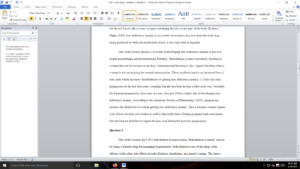
Gynecologist complaining
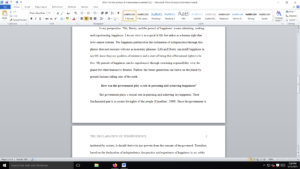

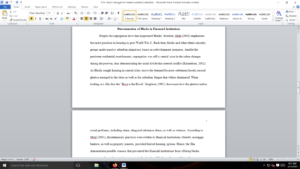

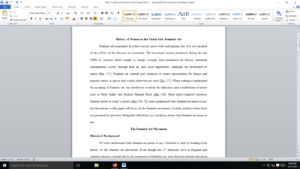
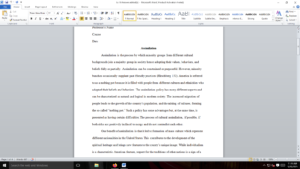
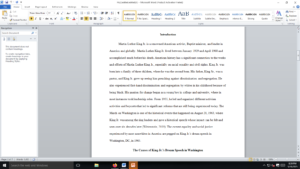

 HIST-1302-Key-Terms-2.pdf
HIST-1302-Key-Terms-2.pdf